Our website is not supported on this browser
The browser you are using (Internet Explorer) cannot display our content.
Please come back on a more recent browser to have the best experience possible

At every phase of a project, from its initiation to its close, stakeholders have a major impact. They can undermine a project, influence its schedule, wreak havoc with budget, expand scope, and take focus away from deliverables. Therefore, it’s crucial for a project manager to identify and list all potential stakeholders of the project in order to mitigate the project’s risks. And once you know who they are – you need to keep them engaged.
Two leading causes of project failure are the insufficient involvement of stakeholders and infrequent communication with sponsors and other key stakeholders.
Stakeholder management is the process of identifying key stakeholders, gaining an understanding of their needs and concerns, and establishing a process of managing to their expectations, throughout the life of the project or program.
By prioritizing our focus on stakeholder management practices we project managers can improve the chances of our project achieving it’s objectives.
On that note, lets introduce you to your stakeholders.
Stakeholders – whether people or organizations – are the participants with a vested interest in the project and who stand to gain or lose something as a result of the project.
They may include:
That is a lot of stakeholders.
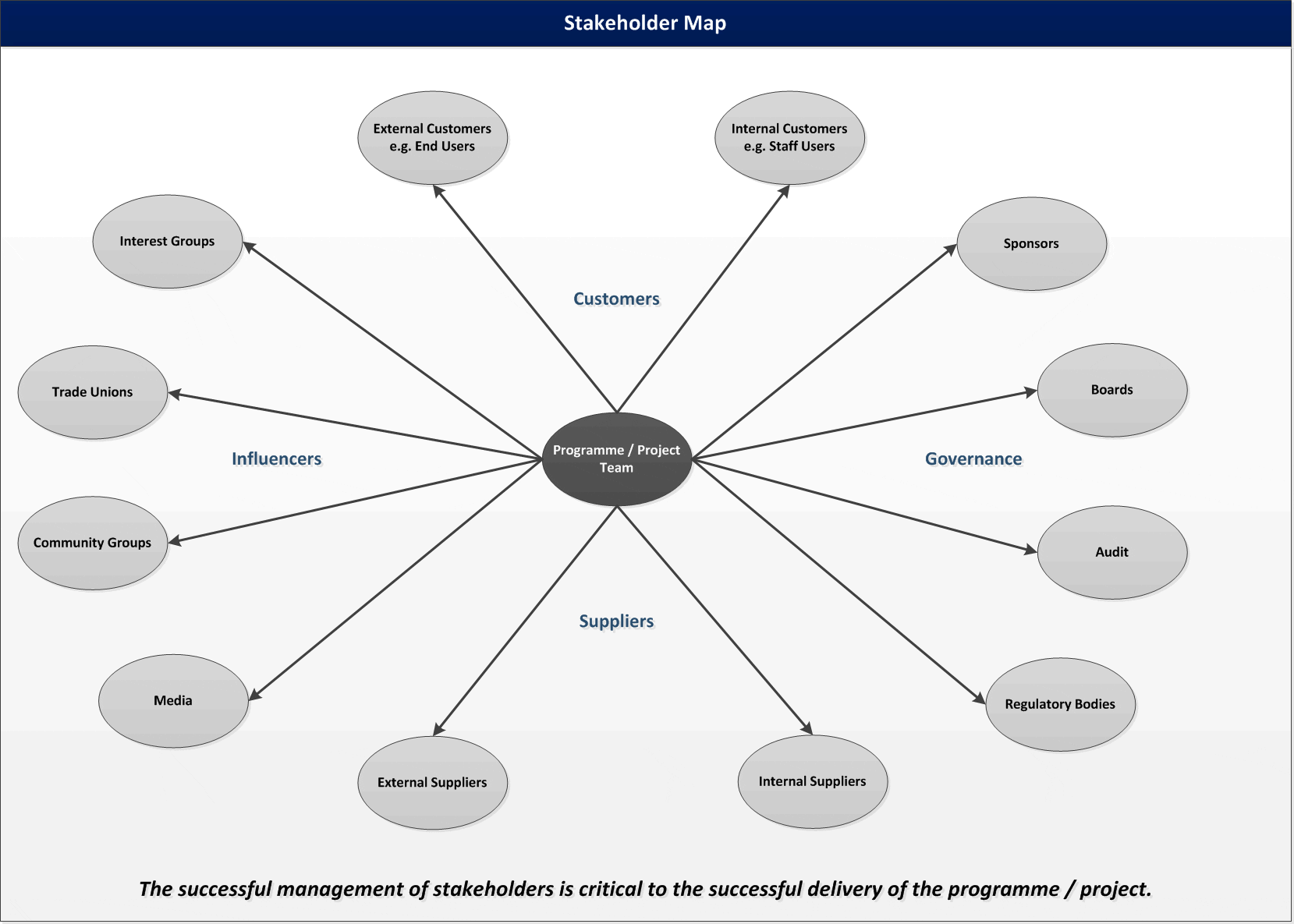
It therefore makes sense to group these stakeholders or “interested parties” into a few broad categories, allowing you to better handle their interests and needs.
Three common stakeholder groups include:
But, not all stakeholders have the same level of interest or want the same return on investment. So it is really important to understand what each of these stakeholders expects from the project so that you may manage to that.
Enter stakeholder identification and analysis – the first step in a four-staged approach to stakeholder management.
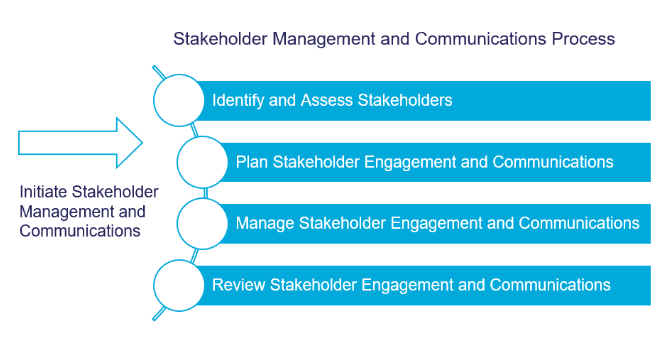
Your first task is to identify and list all the potential stakeholders for a project in a stakeholder register or stakeholder log. This register includes information about the stakeholder’s interests, involvement, expectations, importance, influence, and impact on the project’s execution, as well as any specific communications requirements.
In order to complete the stakeholder log you will likely need to interview your stakeholder. We recommend investing time early on in the project to understand your stakeholders needs.
Investing time to understand your stakeholders needs, assess their impact to the project, and their priorities, leads to creating real value together in a shorter time frame.
Some use a “Stakeholders Expectation Questionnaire,” an interview style template that lets you capture detailed information about stakeholder objectives, measures that matter and the impact and involvement level of the stakeholder.
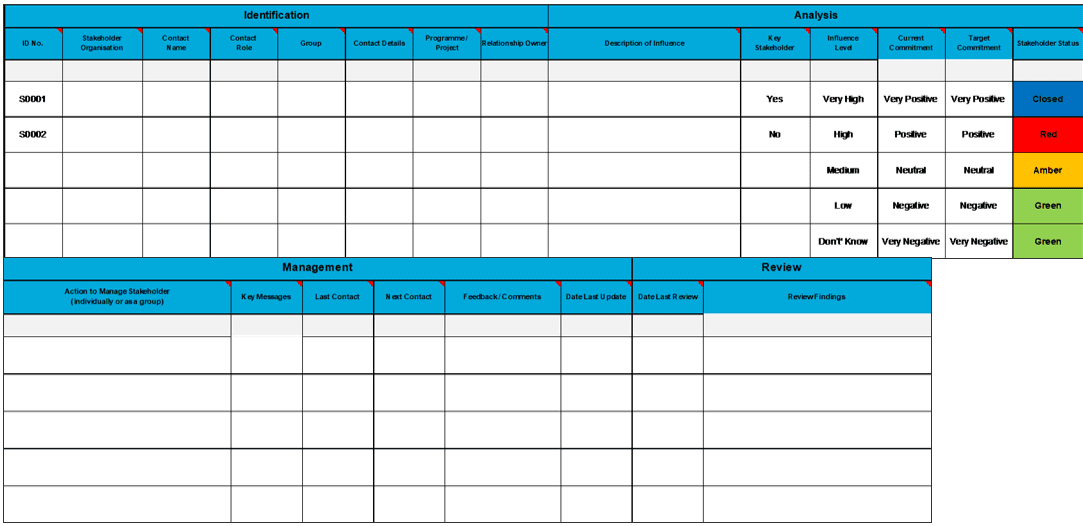
Did you know that Project Management templates are available for download on ProjectManagement.com? See link for a Stakeholder Register Template.
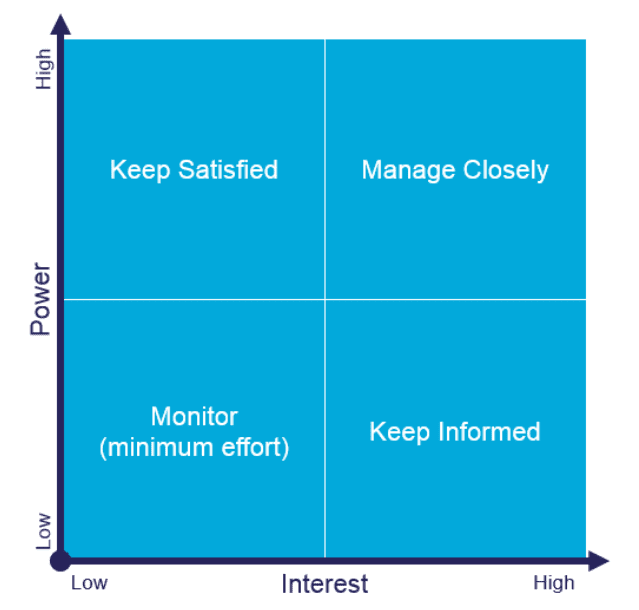
With our information collected, its now time to categorize and group our stakeholders.
We typically categorize stakeholders in three ways:
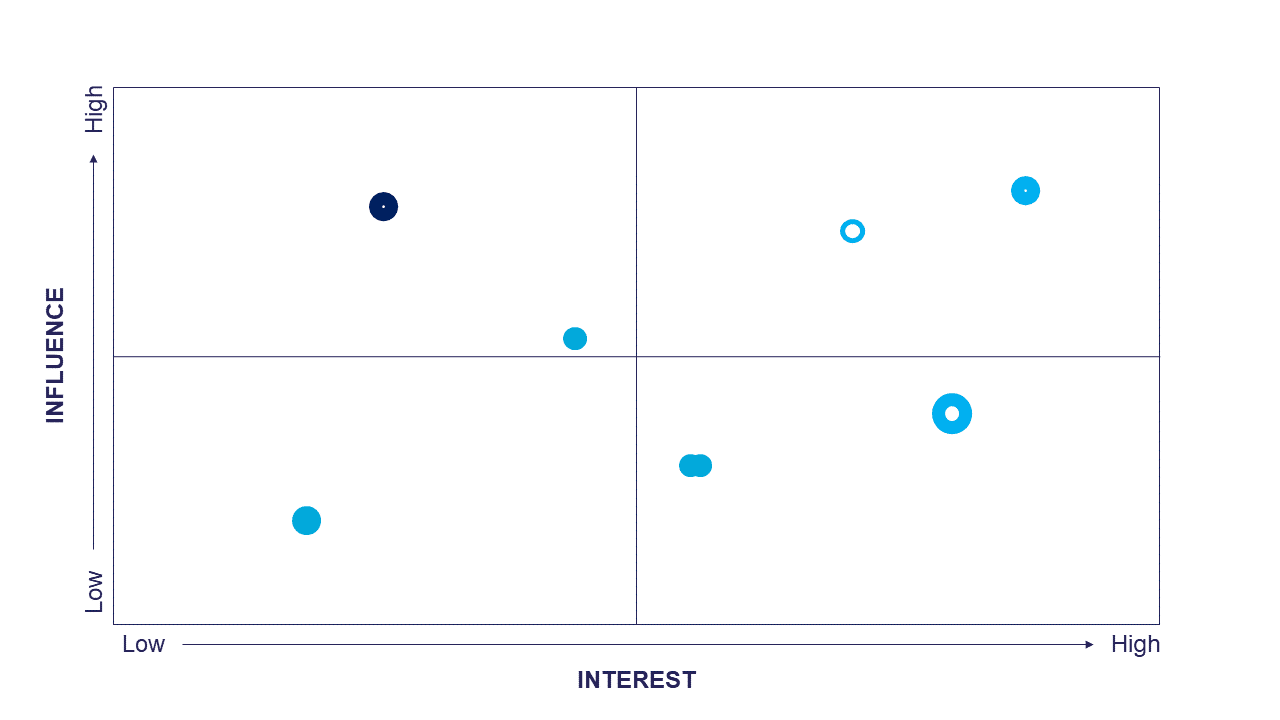
This allows you to clearly identify your stakeholders that you need to “Manage Closely” and prioritize your interactions with them.
However, don’t focus all your effort, time and attention on them. You may also want to identify additional maps outside the traditional power influence grid, showcasing support or satisfaction levels.
This analysis isn’t simply something that gets created and filed away as some kind of project artifact. It can actually help drive further action for maximizing project results.
The second stage in managing stakeholder expectations is to develop a plan for conducting project communications based on stakeholder interest.
This involves planning for communicating regularly on project status and results based on what matters to the stakeholders and where you are at in the project. See a Communications Schedule below.

For example, functional managers may wish to receive a weekly status communication with information related to their employees who are all members of the core project team. Project sponsors and other key stakeholders on the other hand, may only want a monthly status of the project – summarizing milestones on the schedule, the budget and earned value.
It’s important for the project team to log feedback received and discussions generated in their Communications Plan in order to improve future responses and to anticipate further potential risks.
Learn more about adjusting your communications to stakeholders in our Podcast: Building Relationships
Development of a stakeholder management plan is a part of project management that’s often neglected by organizations. Yet, it’s a crucial process that can make or break projects.
In this third stage, the project team needs to monitor stakeholder engagement; adjusting the stakeholder plan execution as necessary to meet the project’s objectives.
The result will allow the project team to:
By monitoring community perception, the project team will better understand needs and wants. Reaching out to stakeholders establishes open communication channels among the teams and stakeholders and helps build trust. And, you may be able to increase the visibility of the project to a new business group you hadn’t initially identified as potential stakeholders.
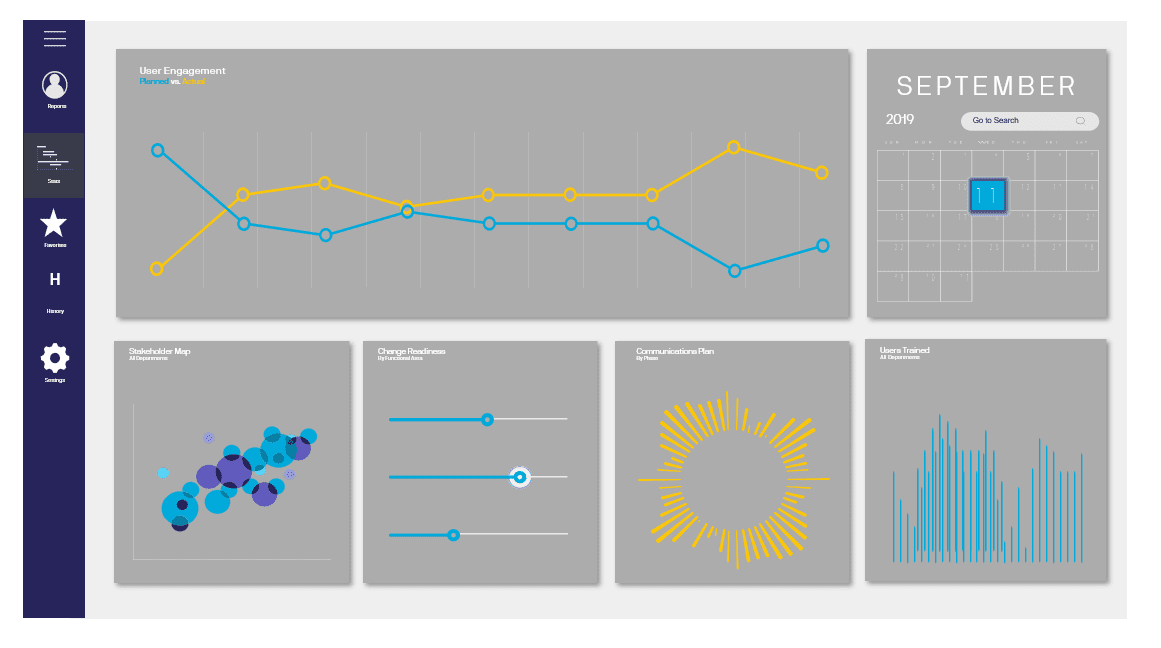
This final process step aims to understand the effectiveness of stakeholder engagement and communication, as well the overall status of stakeholders. This includes their awareness of, involvement in and attitude towards the project and occurs throughout project delivery.
While this is stated as your final step, it actually occurs routinely throughout project delivery. Essentially this is the tracking of your stakeholder KPIs.
A number of methods can be employed for gaining feedback depending on the communications and the stakeholders. These could include interactive communications (e.g. meetings) as well as feedback forms, questionnaires and targeted surveys.
Some examples include:
Shaaron Alvares contributed to this article originally published on pcubed.com. It has been updated to reflect current Stakeholder Management practices.
More on the same subject
Loved what you just read?
Let's stay in touch.
No spam, only great things to read in our newsletter.
We combine our expertise with a fine knowledge of the industry to deliver high-value project management services.
MIGSO-PCUBED is part of the ALTEN group.
Find us around the world
Australia – Canada – France – Germany – Italy – Mexico – The Netherlands – Portugal – Romania – South East Asia – Spain – Switzerland – United Kingdom – United States
© 2024 MIGSO-PCUBED. All rights reserved | Legal information | Privacy Policy | Cookie Settings | Intranet
Perfect jobs also result from great environments : the team, its culture and energy.
So tell us more about you : who you are, your project, your ambitions,
and let’s find your next step together.
Dear candidates, please note that you will only be contacted via email from the following domain: migso-pcubed.com. Please remain vigilant and ensure that you interact exclusively with our official websites. The MIGSO-PCUBED Team
Choose your language
Our website is not supported on this browser
The browser you are using (Internet Explorer) cannot display our content.
Please come back on a more recent browser to have the best experience possible
